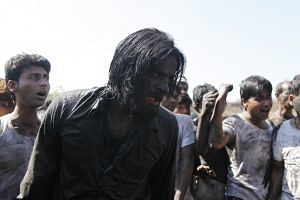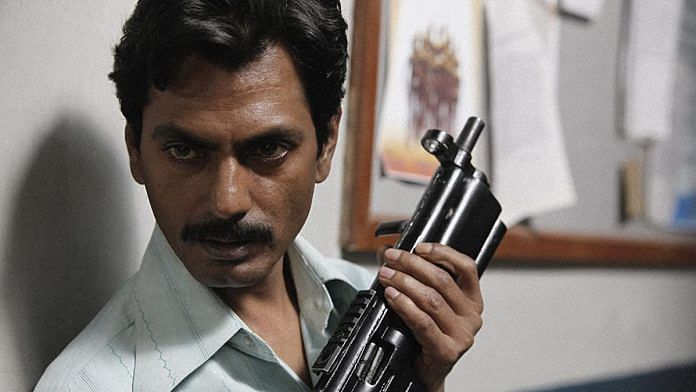Three families, over three decades, in just under 320 minutes— as Gangs of Wasseypur 2 completes a decade on 8 August, it’s easy to take the things Anurag Kashyap’s film gave to Bollywood for granted. From the unfiltered slang to the brandishing of guns, the 2012 films generated yards of memes and content. But it also brought small-town India to the main stage and made violence and family dynamics real, leaving behind the traditional dhishoom-dhishoom and NRI romances. And it didn’t depend on star actors.
The influence of the crime drama is glaringly evident everywhere — in advertisements, memes, and OTT series. It’s safe to say that Gangs of Wasseypur is a cult classic. It introduced audiences to masterful storytelling in small-town India and foreshadowed the raw creative boom that took India’s streaming content by storm. That trend led to some of the Hindi entertainment industry’s best offerings, from Mirzapur to Paatal Lok.
Violence and a mature audience
Remembered for its crass dialogues, tremendous characters, and rampant violence, Gangs of Wasseypur opens with a TV being shot into and ends with a person being shot into. Unlike most movies at the time where violence, gore and blood were things makers would largely shy away from, Gangs of Wasseypur took it in its stride and showed it in all its cruel intensity. But the violence never took centre stage and was only used to further the story. There was an authenticity that had never been seen before and that shocked the audience. In the scene where Shahid Khan was being hit by guards in a Jharkhand coal mine with a bag of coal, actor Jaideep Alhawat actually was hit. To keep the reality of butcher markets intact, the team shot at an abattoir. The blood was real blood.

The amount of violence caused people to complain about the movie at the time of its release, but that is to be expected of an audience that is used to the prim, pretty, and proper worlds created by Dharma and Yash Raj Films.
Gangs of Wasseypur is easily the precursor to a multitude of shows and movies that have sprung up since its release back in 2012. It introduced well-done gritty, edgy, and dark content that was palatable to an audience that had been grossly deprived of mature content. With shows like Sacred Games, Paatal Lok, and Mirzapur, the bar kept rising.
But on the other hand, it’s also easy to see how that careful treatment has gotten lost in the rubble as content now continues to get a lot more bleak, gruesome, and darker, shedding the initial well-balanced precedent that Gangs of Wasseypur set. Makers are now using technical prowess and gratuitous violence to compete with each other and see who can deliver the highest shock value.
Also Read: Hindi films not working because they aren’t rooted in culture: Anurag Kashyap
Small-town India deserves films too
Gangs of Wasseypur was released at a time when Bollywood was pumping out films a dime a dozen, but they were mostly romantic or comedies. The year 2012 saw the release of movies like Hate Story, Ek Main Aur Ekk Tu, Bol Bachchan, Housefull 2. The Anurag Kashyap films changed that landscape.
A complete 180 from what audiences were used to, the films told the story of a small town in the Hindi belt. The underrepresented communities in Hindi films had finally found their saviour in Gangs of Wasseypur. It was able to shine the spotlight on small-town India without patronising it and without the city lens. It didn’t romanticise their difficult life or glorify their misery, at no point did you feel sympathy for the characters out of guilt. As The Indian Express put it, “In the decade since its release, stories set in small-town India have become increasingly popular, and this wouldn’t have been possible without the success of GoW.”
Audiences were exposed to the aspirational side of Wasseypur and its dark, seedy underbelly. Political ambitions and family politics collided in the narrow alleys of Wasseypur. It sparked a wave of stories set in similar cities. For instance, Mirzapur, Panchayat, Gullak, and Hasmukh.
Gangs of Wasseypur changed the tide in Bollywood. It was no longer Karan Johar or Sanjay Leela Bhansali, now the big guns had come to play. Real India was on screen.
(Edited by Neera Majumdar)



